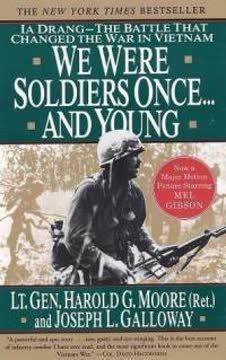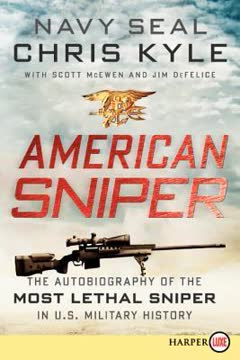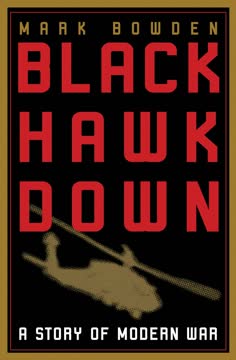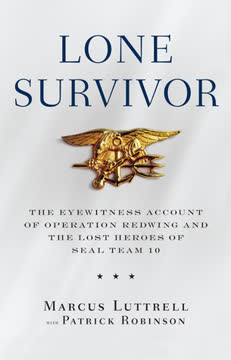Key Takeaways
1. 1965: America Commits to War in Vietnam
It was the year America decided to directly intervene in the Byzantine affairs of obscure and distant Vietnam.
A watershed year. 1965 marked a dramatic shift in American involvement in Vietnam, moving from an "adviser era" to direct combat intervention. This decision, made by President Lyndon B. Johnson, signaled the beginning of a decade-long conflict that would profoundly change both America and Vietnam. The initial deployment of combat troops, like the 1st Cavalry Division, was a significant escalation.
Reluctance and escalation. Despite earlier reservations about land wars in Asia, Johnson, inheriting John F. Kennedy's foreign policy team, felt compelled to act against perceived Communist expansion. Attacks on American personnel, such as the mortar attack at Pleiku, spurred retaliatory air strikes and the deployment of Marines and later the 1st Cavalry Division. This escalation occurred without mobilizing reserves, relying instead on draftees and stripping experienced personnel from other units.
Hanoi's response. North Vietnam, too, was escalating, sending regular army regiments south along the Ho Chi Minh Trail. Their initial plan to seize the Central Highlands was postponed, replaced by a strategy to draw American forces into battle to learn their tactics and find ways to neutralize their technological advantages, particularly airmobility. They aimed to "lure the tiger out of the mountain."
2. The 1st Cavalry Division: Testing Airmobile Warfare
The helicopter, Gavin believed, held the possibility of making the battlefield truly a three-dimensional nightmare for an enemy commander.
A new concept. Born from the vision of officers like Lieutenant General James M. Gavin, the 1st Cavalry Division (Airmobile) was an experimental unit designed to revolutionize infantry warfare using helicopters. Conceived in the late 1950s and accelerated under President Kennedy and Secretary of Defense Robert S. McNamara, the concept aimed to free infantry from terrain constraints and increase battlefield speed and flexibility.
Testing the theory. The 11th Air Assault Division (Test) was created in 1963 at Fort Benning, Georgia, to develop and test airmobile doctrine, tactics, and equipment. Under the command of Brigadier General Harry Kinnard, the unit rigorously trained infantry and aircrews to operate as a cohesive team, practicing rapid assaults, resupply, and medical evacuation by helicopter. This intensive training forged a strong bond between the ground troops and the aviators.
Deployment to Vietnam. Renamed the 1st Cavalry Division (Airmobile) in July 1965, the division was ordered to Vietnam by President Johnson. Despite being understrength due to expiring enlistments and personnel transfers, the division deployed by troopship and aircraft carrier, establishing a base camp at An Khe. Their mission: find and destroy the enemy, testing their new capabilities in real combat.
3. Ia Drang Valley: A Dress Rehearsal for Future Conflict
The Ia Drang campaign was to the Vietnam War what the terrible Spanish Civil War of the 1930s was to World War II: a dress rehearsal; the place where new tactics, techniques, and weapons were tested, perfected, and validated.
First major clash. The Ia Drang campaign in November 1965 was the first large-scale confrontation between the U.S. Army and the North Vietnamese People's Army (PAVN) regulars. It was a brutal, thirty-four-day series of engagements, culminating in the battles at Landing Zones X-Ray and Albany, that provided critical, albeit sometimes misleading, lessons for both sides.
Mutual objectives. The PAVN sought to test the Americans' airmobile tactics and high-tech weaponry, finding ways to counter them, particularly by fighting at close range ("grabbing them by the belt") to neutralize American artillery and air support. The Americans aimed to use their airmobility to rapidly insert troops into remote enemy base areas and bring overwhelming firepower to bear.
Claiming victory. Both sides claimed victory in the Ia Drang. The Americans highlighted the high enemy body count (a favorable kill ratio), believing attrition would win the war. The North Vietnamese saw that they could stand and fight the Americans, absorb heavy losses, and inflict significant casualties, believing their patience and willingness to sacrifice would ultimately prevail against American public opinion.
4. LZ X-Ray: The First Major Battle and a Test of Will
We were fighting for our lives.
Insertion into the unknown. On November 14, 1965, Lieutenant Colonel Hal Moore's 1st Battalion, 7th Cavalry conducted the first air assault into Landing Zone X-Ray, a clearing at the base of the Chu Pong massif, deep in a suspected enemy base area. Based on limited intelligence, the landing was a calculated risk, aiming to find and engage the enemy.
Immediate contact. Within minutes of the initial landing, patrols from Bravo Company made contact with North Vietnamese soldiers. The capture of a prisoner revealed the presence of multiple enemy battalions nearby, confirming the Americans had landed in a hornet's nest. The battle escalated rapidly from scattered firefights to a full-scale engagement.
Fighting for the LZ. The small clearing, LZ X-Ray, became the critical lifeline for the American battalion. Moore's primary objective was to hold the landing zone to allow reinforcements, ammunition, water, and medical supplies to arrive, and to evacuate the wounded. The battle quickly centered on defending the perimeter against determined enemy assaults.
5. The Crucible of X-Ray: Valor, Firepower, and Survival
We killed for each other, we died for each other, and we wept for each other.
Intense, close combat. The battle at X-Ray was characterized by brutal, close-quarters fighting in tall elephant grass and scrub brush. PAVN soldiers, often in human-wave assaults, attempted to overrun American positions, particularly targeting leaders, radio operators, and medics. The fighting spirit and discipline of the American soldiers, many of them draftees with little combat experience, were severely tested.
Overwhelming firepower. American survival at X-Ray depended heavily on the massive and coordinated application of supporting fires.
- Artillery from nearby firebases provided continuous barrages around the perimeter.
- Aerial Rocket Artillery (ARA) helicopters delivered devastating rocket and machine-gun fire.
- Air Force and Navy fighter-bombers dropped bombs and napalm on enemy concentrations.
Brave aviators. The helicopter pilots and crews of the 229th Aviation Battalion, led by Major Bruce Crandall and Captain Ed Freeman, flew repeated missions into the hot LZ under heavy fire to deliver supplies and evacuate the wounded. Their courage and dedication were crucial, often flying overloaded aircraft and risking their lives when dedicated medevac helicopters refused to land in the contested zone.
6. The Lost Platoon: A Desperate Stand Against the Odds
We were surrounded.
Cut off and isolated. Early in the X-Ray battle, Lieutenant Henry Herrick's 2nd Platoon of Bravo Company became separated from the rest of the battalion during a pursuit of fleeing enemy soldiers. They were quickly surrounded by a much larger North Vietnamese force and engaged in a desperate fight for survival, clinging to a small knoll.
Leadership and resilience. Despite suffering heavy casualties, including the deaths of Lieutenant Herrick and his platoon sergeant, the surviving members of the platoon, led by Sergeant Ernie Savage, refused to surrender. They fought off multiple assaults, relying on their remaining ammunition, captured enemy weapons, and the courage of their medic, Specialist Charles Lose, who tended the wounded under fire.
Holding the line. The trapped platoon's tenacious defense, supported by artillery fire directed by Sergeant Savage via radio, disrupted enemy movements and likely prevented a larger assault on the main American perimeter. Their ordeal lasted over twenty-six harrowing hours before a relief force finally fought its way through to them.
7. LZ Albany: A Deadly March into a Prepared Ambush
The most savage one-day battle of the Vietnam War had just begun.
Movement orders. Following the battle at X-Ray, Lieutenant Colonel Robert Mcdade's 2nd Battalion, 7th Cavalry, along with attached units, was ordered to march overland to a new landing zone, Albany, approximately two miles away. The move was partly to clear the area for B-52 strikes on the Chu Pong massif and partly to continue searching for the enemy.
Walking into a trap. Unbeknownst to the American command, the North Vietnamese had concentrated significant forces, including fresh battalions, in the area between X-Ray and Albany. As Mcdade's battalion, strung out in a long column, approached the Albany clearing, they walked directly into a hasty ambush.
Disintegration of the column. The sudden, intense enemy fire, often from close range and multiple directions, shattered the American column. With company commanders forward for a briefing and units dispersed in the tall grass, communication and control rapidly broke down. The battalion was cut into isolated pockets fighting for their lives.
8. Chaos and Carnage: The Brutality of the Albany Fight
It was utter chaos.
Hand-to-hand combat. The battle at Albany devolved into a brutal, close-quarters melee in the dense vegetation. American and North Vietnamese soldiers were often intermingled, making it difficult to distinguish friend from foe and hindering the effective use of American firepower. The fighting was savage, with bayonets, grenades, and point-blank rifle fire.
Heavy casualties. The surprise and intensity of the ambush resulted in horrific losses for the American battalion, particularly Charlie and Delta companies and the Headquarters Company. Many soldiers were killed or wounded in the initial minutes, and enemy soldiers systematically moved through the tall grass executing wounded Americans.
Friendly fire and confusion. The chaotic nature of the battle, coupled with poor visibility and intermingled forces, led to instances of friendly fire. Soldiers, unable to see clearly, sometimes fired on the sounds of movement, tragically hitting their own comrades. The lack of clear command and control in the fragmented column exacerbated the confusion and casualties.
9. Escape, Evasion, and Rescue: Individual Ordeals
To be lost and alone in a hostile land where the next man you meet wants only to kill you.
Isolated survival. Amidst the carnage at Albany, many American soldiers found themselves cut off, wounded, and alone in the tall grass. Their survival depended on individual courage, resourcefulness, and the ability to conceal themselves from enemy patrols sweeping the battlefield. Stories of "escape and evasion" became legendary.
Against all odds. Wounded soldiers like PFC James Shadden and Specialist James Young, relying on instincts and training, crawled and hid for hours, sometimes days, enduring pain, thirst, and the constant threat of discovery. Their journeys back to friendly lines, often through enemy-held territory, were harrowing tests of will.
Rescue efforts. Despite the extreme danger, American patrols ventured back into the killing zone to search for survivors, guided by radio calls from wounded soldiers like Lieutenant Robert Jeanette ("Ghost 4-6"). These rescue missions, often conducted at night, were fraught with peril, highlighting the deep bonds of camaraderie among the soldiers.
10. The Human Cost: Families and the Lingering Pain
Only the dead have seen the end of war.
Telegram delivery. The high casualties at Ia Drang brought the grim reality of the war home to America with unprecedented force. The initial, impersonal delivery of casualty telegrams by taxi drivers in towns like Columbus, Georgia, added to the shock and grief of families.
Shattered lives. The deaths of fathers, sons, husbands, and brothers left deep and lasting wounds on families. Wives became young widows, children grew up without fathers, and parents mourned the loss of their only sons. The lack of support systems and the country's later ambivalence towards the war compounded their suffering.
Lingering trauma. For survivors and families alike, the memories of Ia Drang and the Vietnam War continued to cause pain for decades. Nightmares, flashbacks, and the emotional scars of combat and loss were a constant reminder of the price paid in that distant valley. The search for missing men and the eventual identification of remains brought some closure, but the sense of loss remained.
11. Lessons Learned (and Ignored): Shaping the War's Future
When General Giap says he learned how to fight Americans and our helicopters at the Ia Drang, that's bullshit! What he learned was that he had sanctuary.
Conflicting interpretations. Both American and North Vietnamese commanders drew lessons from the Ia Drang campaign, but their interpretations differed significantly. American generals saw a favorable kill ratio and believed a strategy of attrition could win the war, underestimating the enemy's willingness to absorb losses. North Vietnamese leaders learned how to counter American airmobility by fighting at close range and confirmed the importance of sanctuaries in Cambodia.
Political constraints. A key lesson for the PAVN was that American forces were prohibited from pursuing them into Cambodia. This political constraint, imposed by Washington, granted the enemy inviolable sanctuaries where they could rest, refit, and plan future attacks, effectively ceding the initiative to North Vietnam. Military commanders on the ground were frustrated by this restriction.
Escalation and uncertainty. The Ia Drang battles confirmed to Secretary of Defense McNamara that the war would require a massive increase in American troop levels, potentially reaching 400,000 or more, with no guarantee of success and the risk of escalating casualties. Despite this grim assessment, the decision was made to escalate, setting the stage for years of costly conflict.
Last updated:
FAQ
What is We Were Soldiers Once... and Young: Ia Drang – The Battle that Changed the War in Vietnam by Harold G. Moore and Joseph L. Galloway about?
- Comprehensive battle narrative: The book provides a detailed account of the Battle of Ia Drang in 1965, the first major engagement between American and North Vietnamese forces during the Vietnam War.
- Focus on soldiers’ experiences: It centers on the 1st Battalion, 7th Cavalry, highlighting the intense combat, leadership challenges, and personal stories of both American and North Vietnamese soldiers.
- Strategic and emotional impact: The narrative explores the battle’s significance in shaping military tactics, political decisions, and the emotional toll on soldiers and their families.
- Dual perspective: Written by a battalion commander and a war correspondent, the book combines firsthand military insight with journalistic observation for a well-rounded portrayal.
Why should I read We Were Soldiers Once... and Young by Harold G. Moore and Joseph L. Galloway?
- Authentic firsthand perspective: The authors were present at the battle, offering vivid, accurate, and deeply personal insights into combat and leadership under fire.
- Comprehensive coverage: The book goes beyond the battlefield, addressing political, strategic, and human consequences, including interviews with veterans and North Vietnamese commanders.
- Emotional resonance: It shares stories of courage, sacrifice, and grief, including the aftermath for families and the long-term impact on veterans.
- Historical significance: The book is a valuable resource for understanding the realities of the Vietnam War and the evolution of modern warfare.
What are the key takeaways from We Were Soldiers Once... and Young by Harold G. Moore and Joseph L. Galloway?
- Airmobile warfare innovation: The battle tested and validated the use of helicopters for rapid troop deployment, changing the nature of combat in Vietnam.
- Leadership and brotherhood: The importance of strong, adaptive leadership and the deep bonds formed among soldiers are central themes.
- Human cost of war: The book highlights the physical and psychological toll on soldiers, the suffering of families, and the alienation many veterans felt upon returning home.
- Strategic lessons: Both sides learned critical lessons that influenced the conduct of the Vietnam War, including the limitations and strengths of American tactics.
Who were the main military leaders and figures featured in We Were Soldiers Once... and Young by Harold G. Moore and Joseph L. Galloway?
- Lieutenant Colonel Harold G. Moore: The battalion commander who led the 1st Battalion, 7th Cavalry, known for his presence on the ground and commitment to his men.
- Sergeant Major Basil L. Plumley: Moore’s trusted right-hand man, a veteran of previous wars, who provided discipline and morale support.
- Captain Bruce Crandall: Commander of the 229th Assault Helicopter Battalion, whose bravery in resupply and medevac missions was vital.
- Other key officers and figures: Company commanders like Captain John Herren, Captain Bob Edwards, Captain Tony Nadal, and embedded reporter Joe Galloway, who documented the battle.
What were the key phases and events of the Battle of Ia Drang as described in We Were Soldiers Once... and Young?
- Initial air assault at LZ X-Ray: The battalion was inserted by helicopter into a hot landing zone, immediately facing heavy enemy fire and fighting to establish a perimeter.
- Night defense and artillery support: Troops endured constant threat, relying on artillery, mortars, and flares to repel enemy attacks through the night.
- Dawn attacks and counterattacks: The enemy launched fierce assaults at first light, which were repelled by combined arms fire and determined infantry defense.
- Ambush at LZ Albany: After leaving X-Ray, the 2nd Battalion, 7th Cavalry was ambushed, resulting in brutal close-quarters combat and heavy casualties.
How did airmobile warfare and helicopter tactics shape the battle in We Were Soldiers Once... and Young by Harold G. Moore?
- Revolutionary deployment: The 1st Cavalry Division (Airmobile) used helicopters to insert troops rapidly into difficult terrain, bypassing traditional road-bound movement.
- Helicopter integration: Aircraft like the UH-1 Huey and CH-47 Chinook were used for troop transport, fire support, and logistics, enabling quick reinforcement and resupply.
- Tactical flexibility: The airmobile concept allowed for decentralized decision-making and rapid adaptation to battlefield conditions.
- Challenges and risks: Helicopter operations were dangerous, with pilots braving heavy fire to deliver ammunition and evacuate wounded, often under extreme conditions.
What role did artillery and air support play in the Battle of Ia Drang according to We Were Soldiers Once... and Young?
- Crucial firepower: Artillery and air strikes were indispensable in breaking up enemy attacks, especially during night assaults and human wave charges.
- Close-in support: Forward observers adjusted artillery fire to within yards of friendly positions, a risky but necessary tactic to prevent enemy breakthroughs.
- Air support challenges: Dense jungle and smoke sometimes hindered air strikes, and there were tragic incidents of friendly fire, including napalm strikes near American positions.
- Morale and survival: The arrival of air support lifted morale and was often the difference between survival and defeat for surrounded troops.
What were the main challenges and hardships faced by the American forces in We Were Soldiers Once... and Young by Harold G. Moore?
- Enemy numerical superiority: American units were often outnumbered and faced aggressive, well-coordinated North Vietnamese attacks.
- Difficult terrain: Dense jungle and tall elephant grass limited visibility, movement, and communication, complicating defense and resupply.
- Communication breakdowns: Loss of radio operators and damaged equipment impaired command and control, increasing vulnerability.
- Medical evacuation difficulties: Medevac helicopters faced heavy fire, delaying treatment for the wounded and increasing casualties.
How does We Were Soldiers Once... and Young by Harold G. Moore portray the experiences and bonds among soldiers during the battle?
- Intense combat and casualties: The book provides harrowing accounts of firefights, wounds, and deaths, capturing the chaos and fear of battle.
- Brotherhood and love: Soldiers developed deep bonds, described as a transcendent love for each other, forged in the crucible of combat.
- Leadership under fire: The narrative highlights the critical role of junior officers and noncommissioned officers in maintaining unit cohesion and effectiveness.
- Emotional and psychological toll: The book does not shy away from the trauma, grief, and long-term impact on those who fought.
What was the North Vietnamese perspective and strategy in the Battle of Ia Drang as presented in We Were Soldiers Once... and Young by Harold G. Moore?
- Determined and disciplined enemy: North Vietnamese commanders are portrayed as well-trained, motivated, and willing to absorb heavy losses to achieve their goals.
- Use of terrain and ambush: The enemy exploited the jungle environment to stage ambushes and close combat, negating some American advantages.
- Strategic learning: The battle was used to study and adapt to American airmobile tactics, shaping future engagements.
- Political and morale impact: The North Vietnamese saw the battle as a morale booster and proof of their ability to stand against a superpower.
How does We Were Soldiers Once... and Young by Harold G. Moore and Joseph L. Galloway address the aftermath and impact on soldiers and families?
- Casualty notification and grief: The book reveals the harsh realities of notifying families, often through impersonal telegrams, and the deep emotional toll on loved ones.
- Veterans’ post-war struggles: Many survivors faced physical disabilities, psychological scars, and challenges reintegrating into civilian life.
- Enduring bonds: The narrative highlights the lasting camaraderie among veterans and their efforts to honor fallen comrades.
- Military and political consequences: The battle influenced U.S. military strategy, troop escalations, and public perception of the war.
What are the most memorable quotes from We Were Soldiers Once... and Young by Harold G. Moore and what do they mean?
- "We were soldiers once, and young." This phrase encapsulates the book’s theme of youthful patriotism, sacrifice, and the lasting impact of war on those who served.
- "Only the dead have seen the end of war." (Plato) A somber reflection on the enduring nature of conflict and its lifelong effects on survivors.
- "There are only three principles of warfare: Audacity, Audacity, and audacity!" This quote highlights the importance of boldness and initiative in combat.
- "We have good corporals and good sergeants and some good lieutenants and captains, and those are far more important than good generals." (William Tecumseh Sherman) Emphasizes the critical role of junior leaders and non-commissioned officers in battle.
Review Summary
We Were Soldiers Once... and Young is a powerful account of the Vietnam War's Battle of Ia Drang. Readers praise its vivid depiction of combat, detailed portrayal of soldiers' experiences, and balanced perspective that includes both American and Vietnamese viewpoints. The book is lauded for its honesty, emotional impact, and comprehensive coverage of the battle's aftermath. Many consider it essential reading for understanding the Vietnam War, appreciating the sacrifices of soldiers, and grasping the complexities of military conflict. Some readers found the numerous names and details challenging to follow but ultimately rewarding.
Similar Books
Download PDF
Download EPUB
.epub digital book format is ideal for reading ebooks on phones, tablets, and e-readers.








